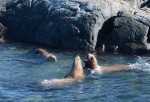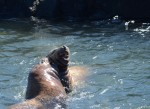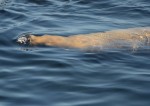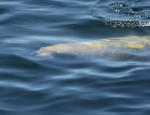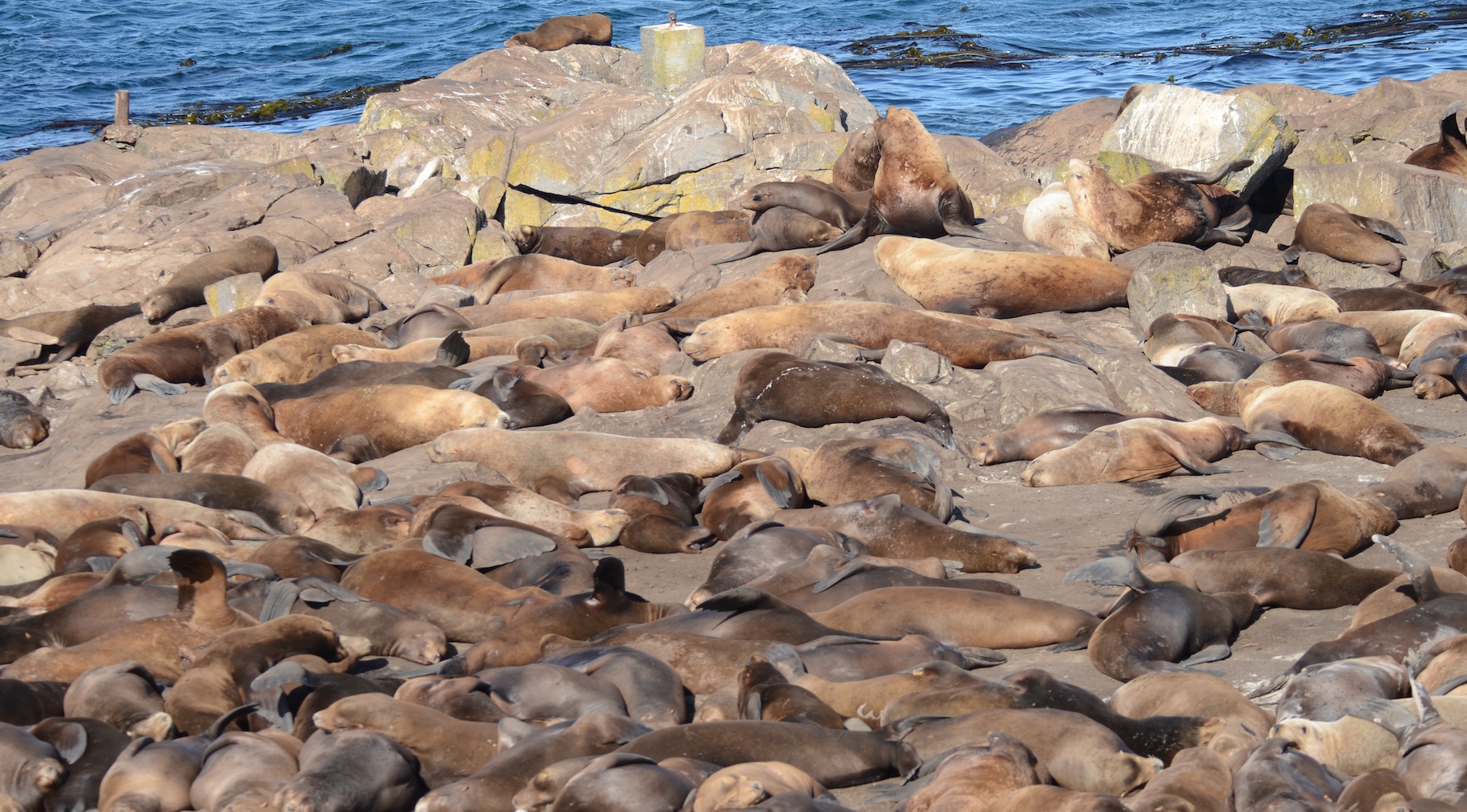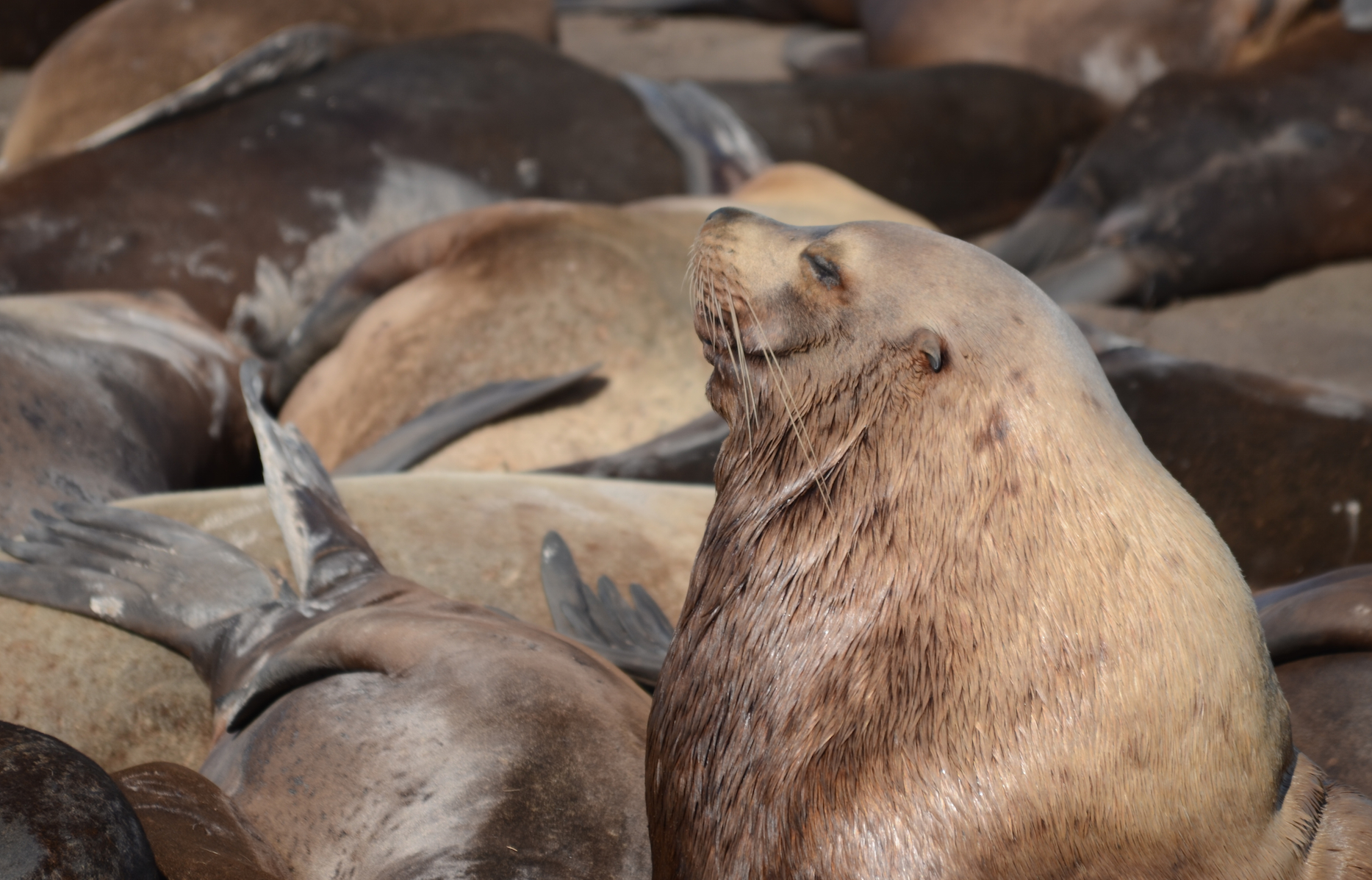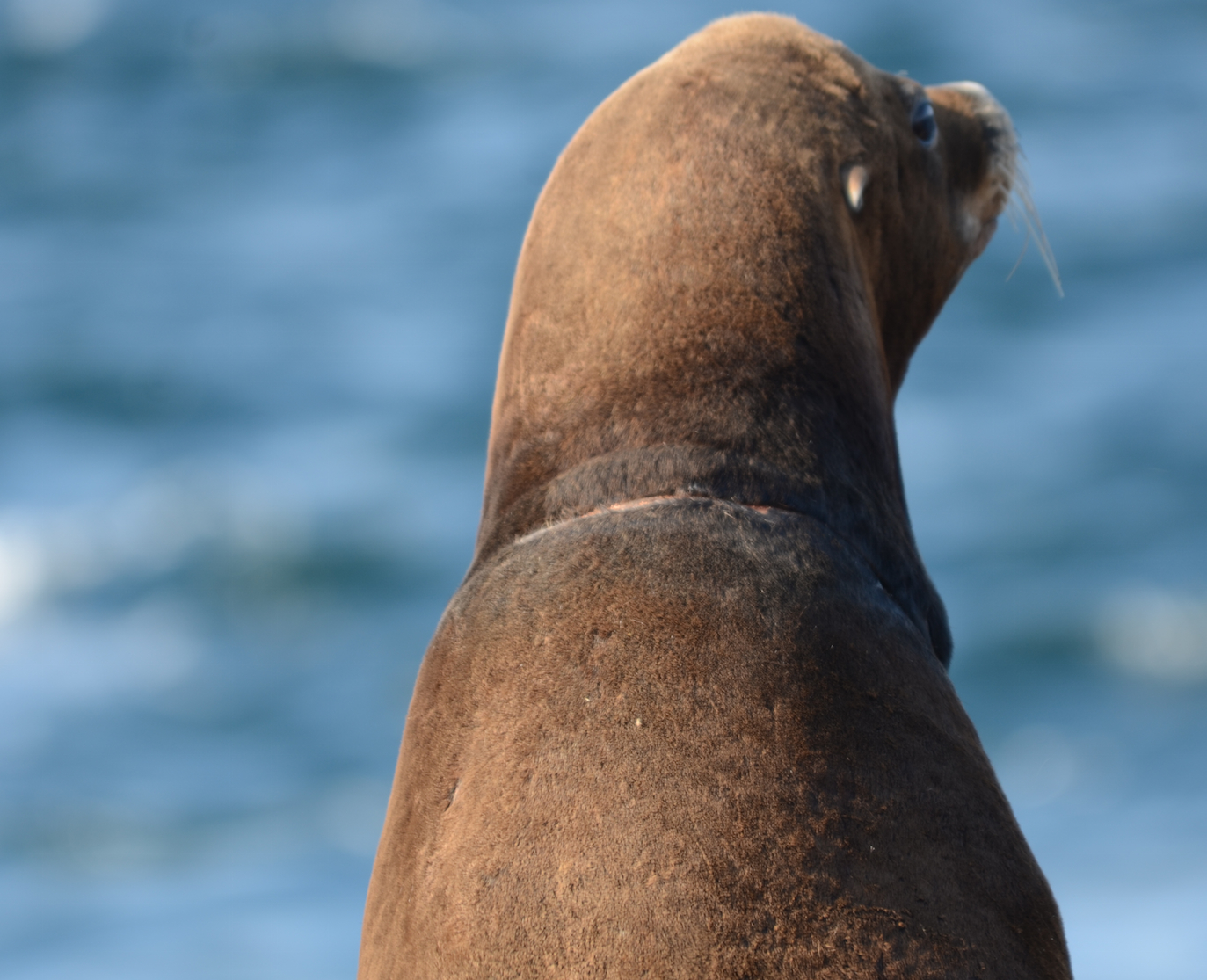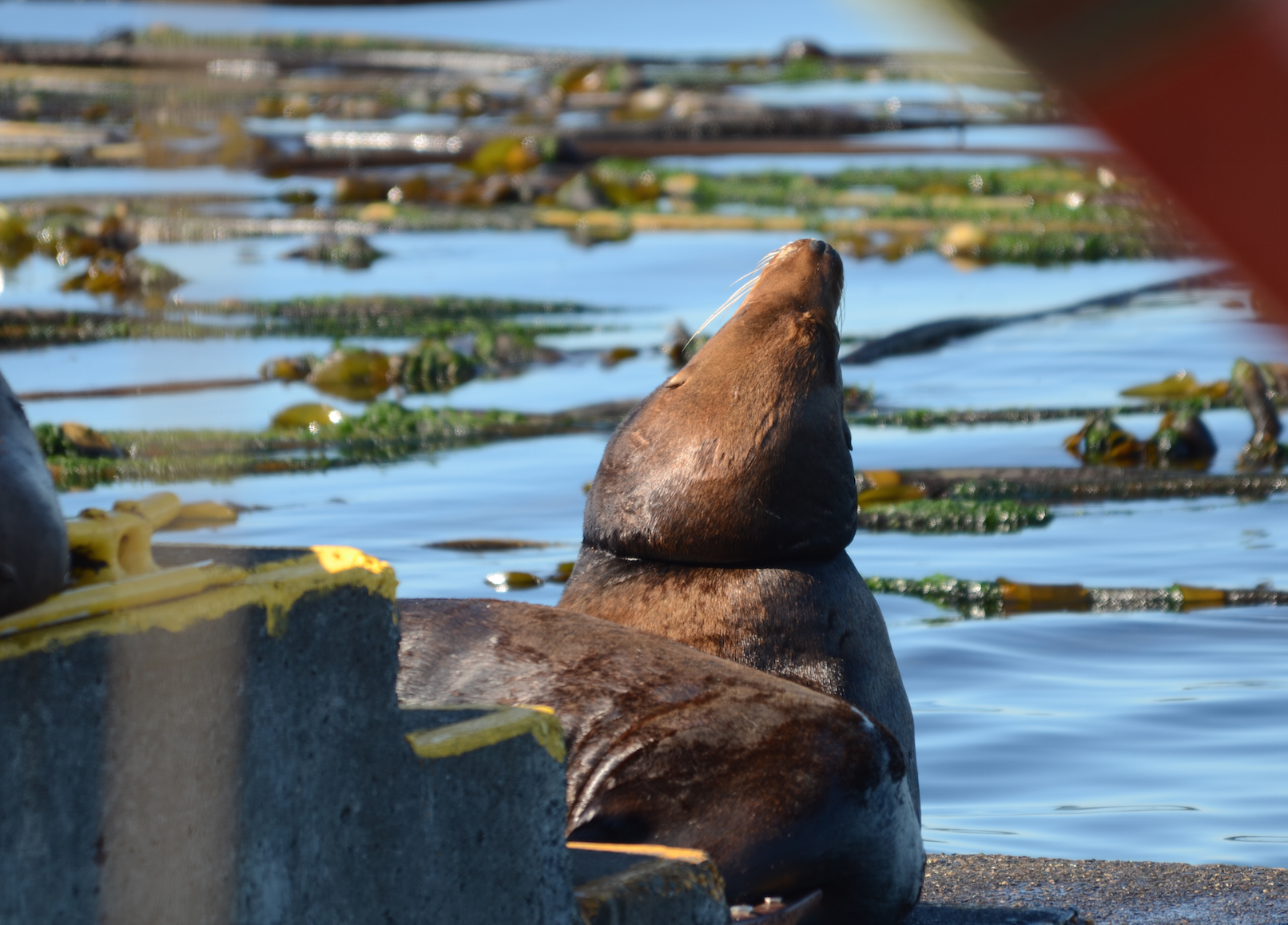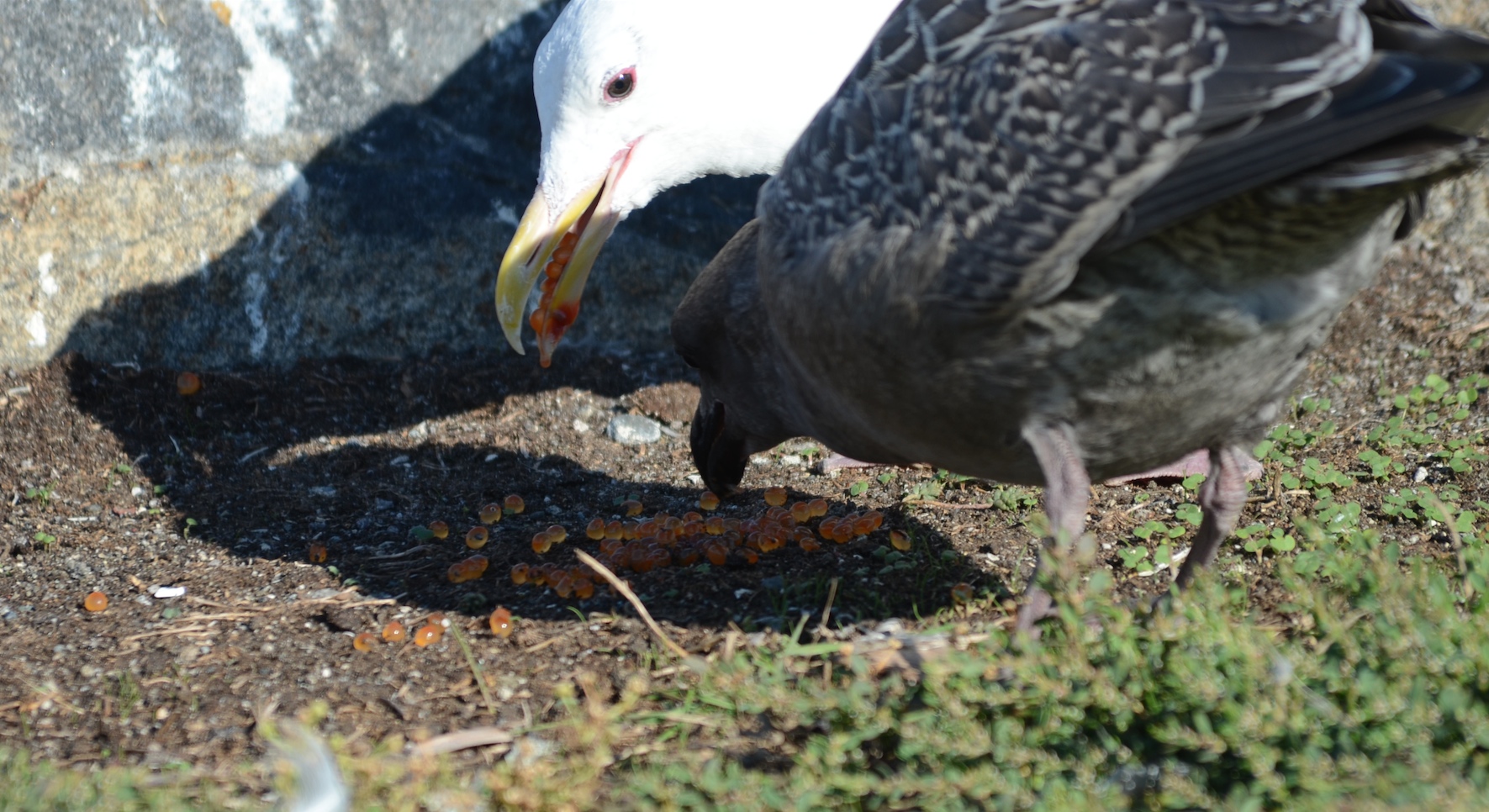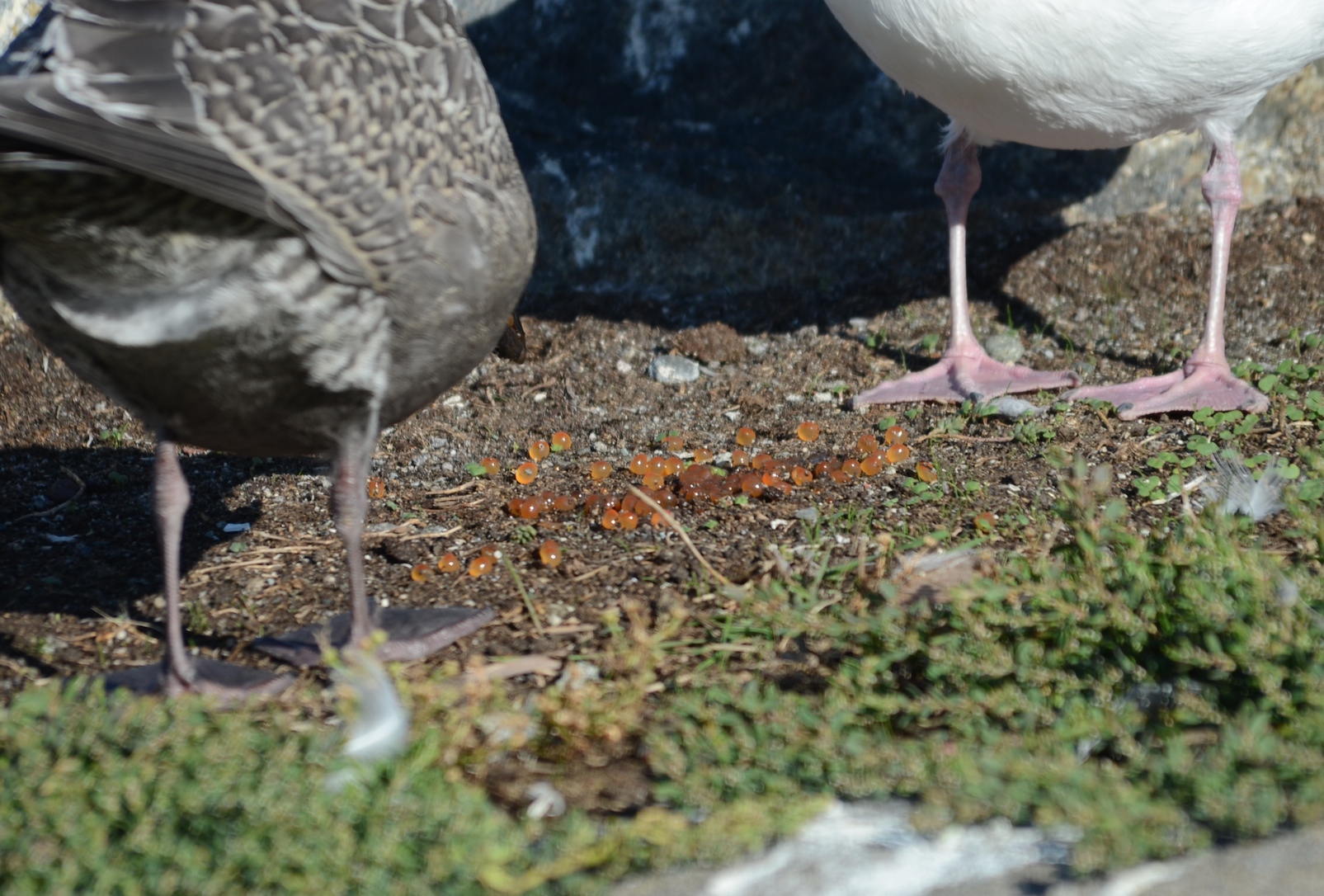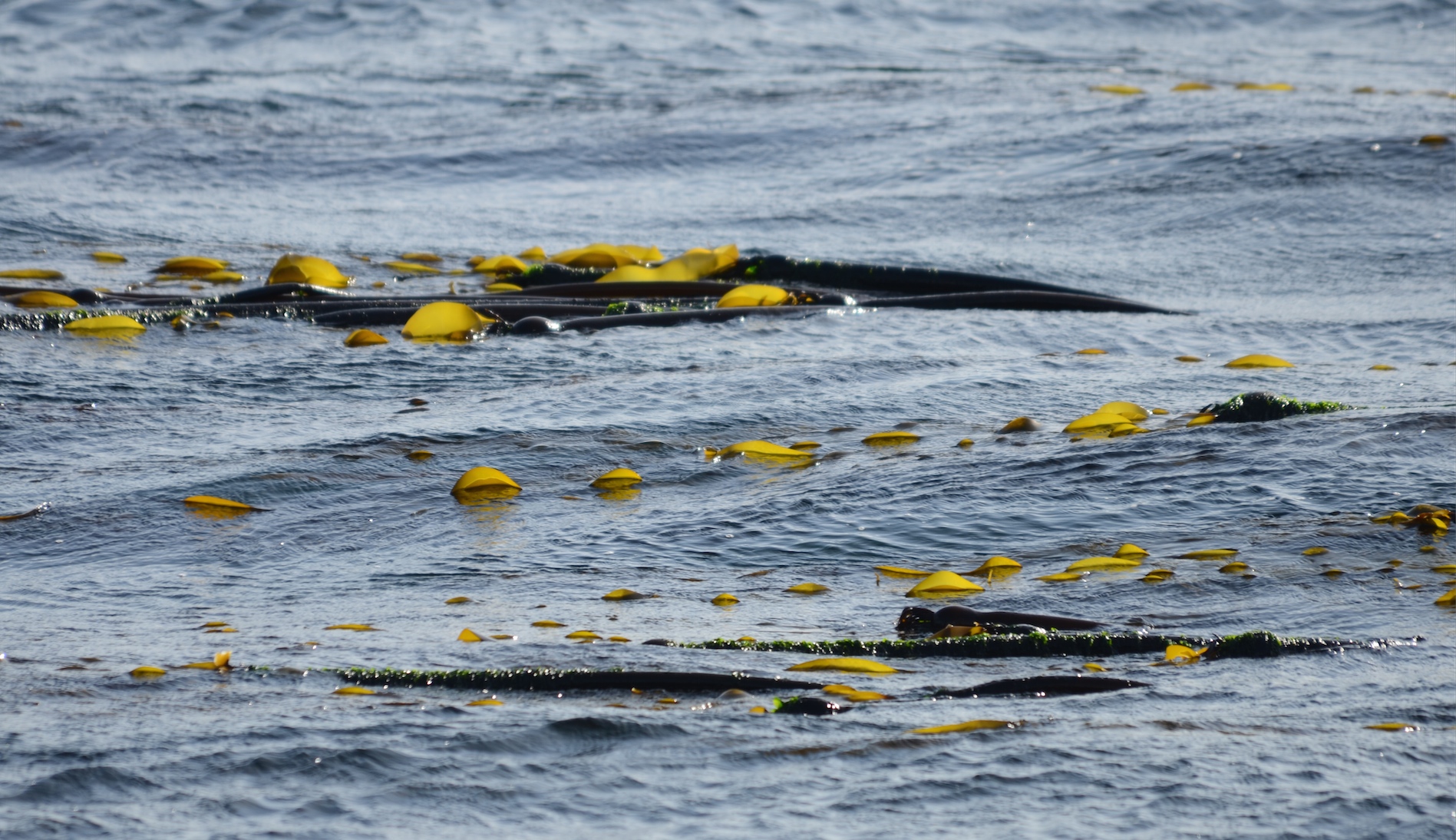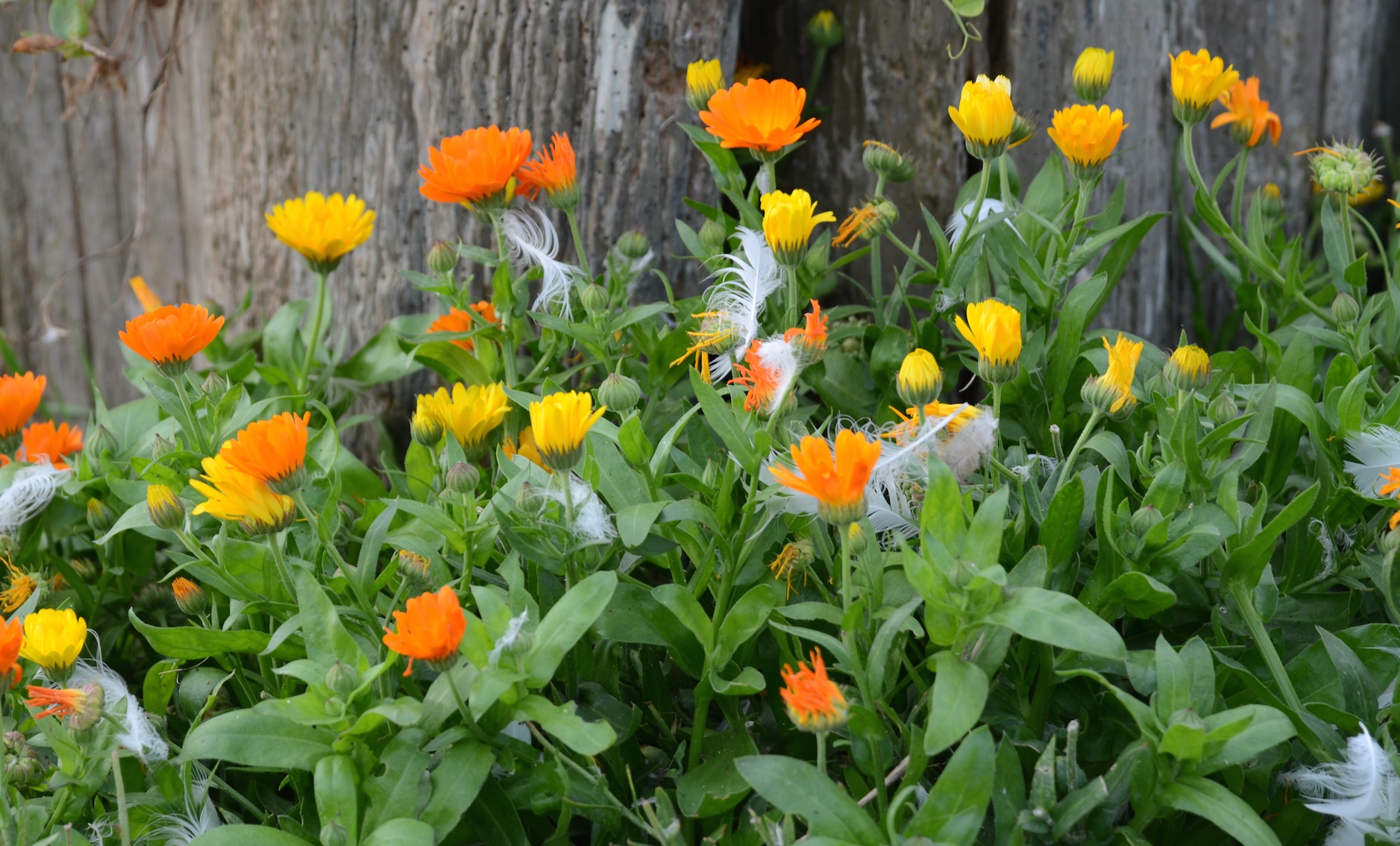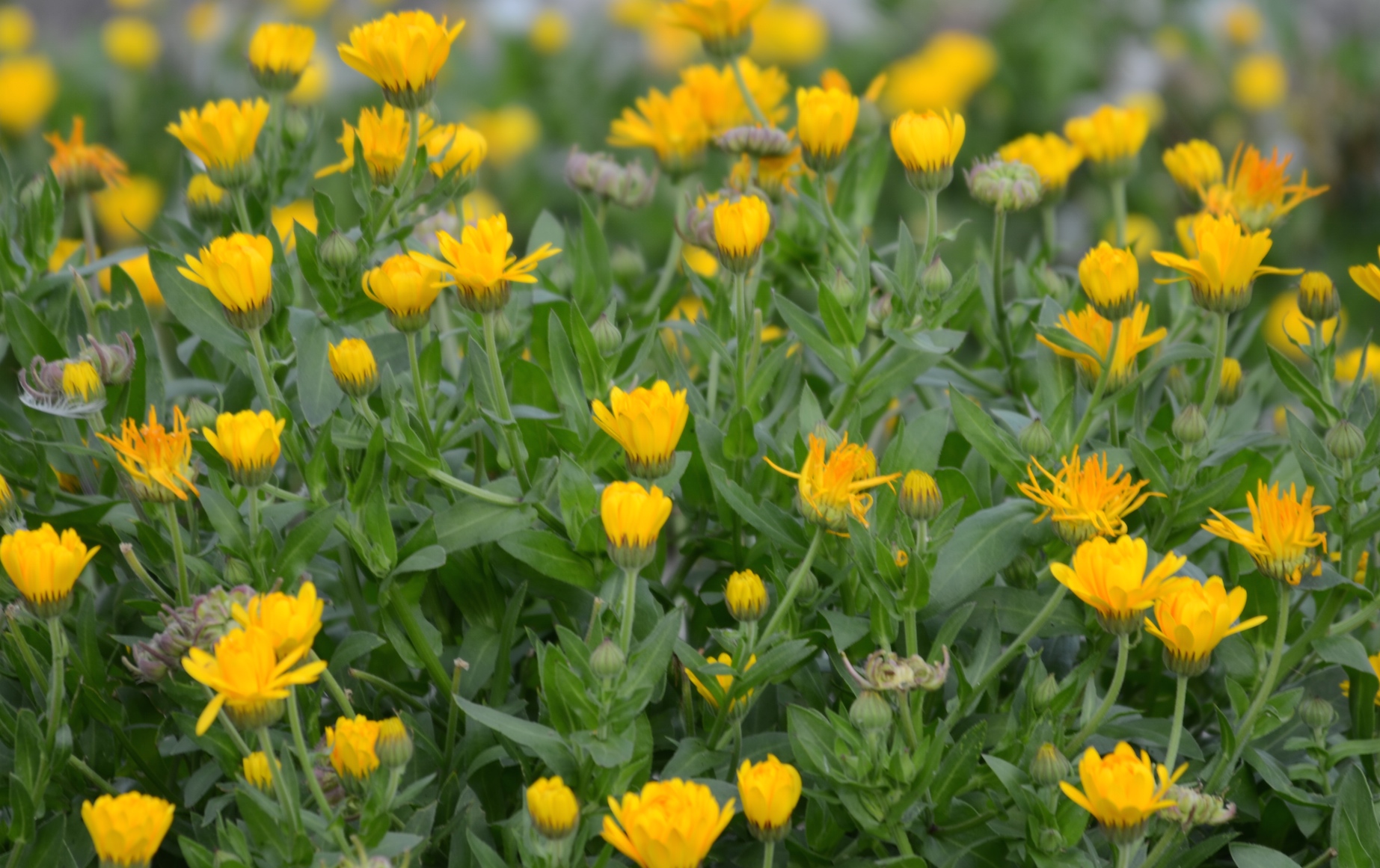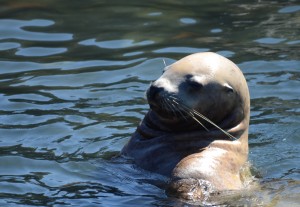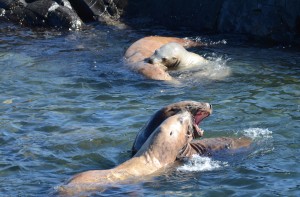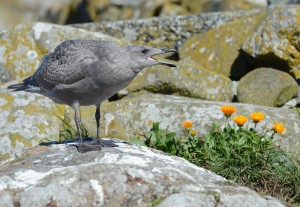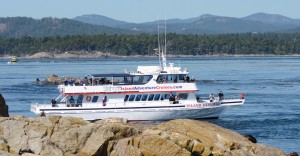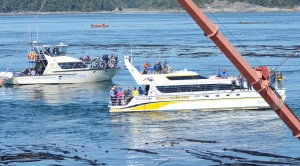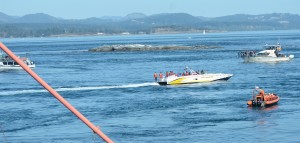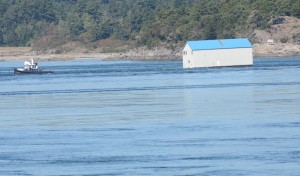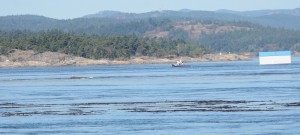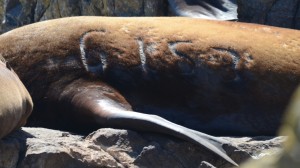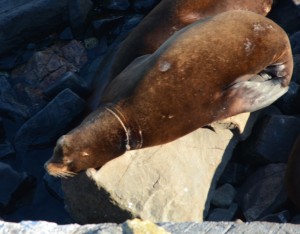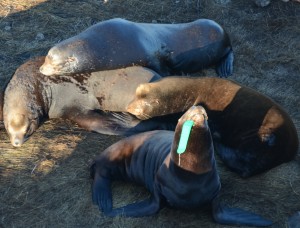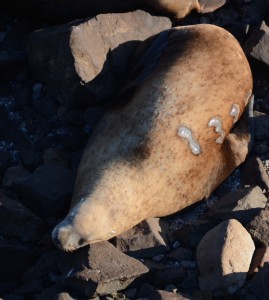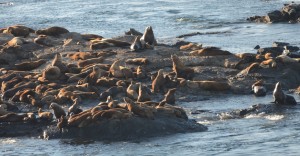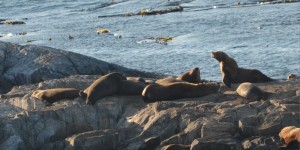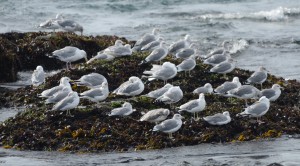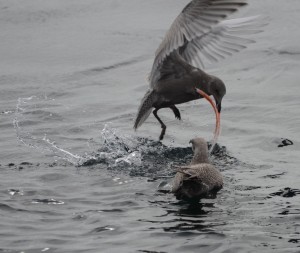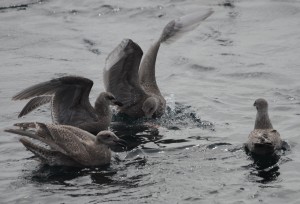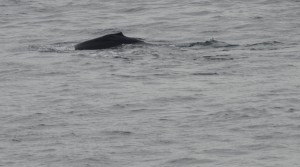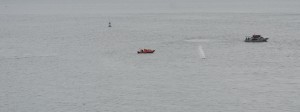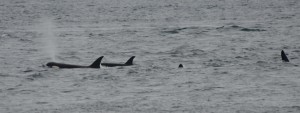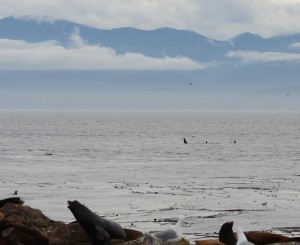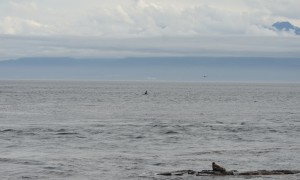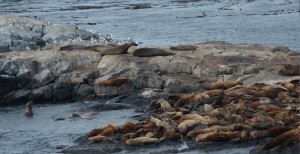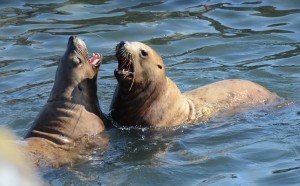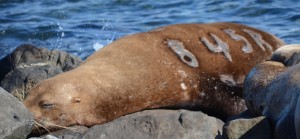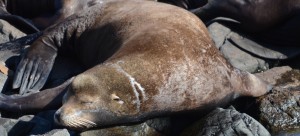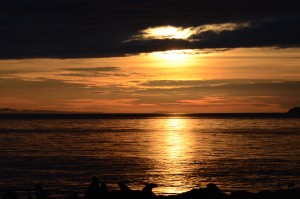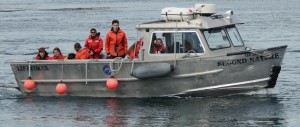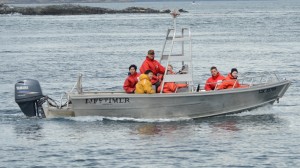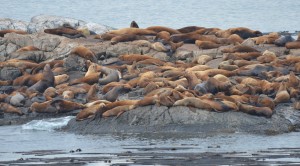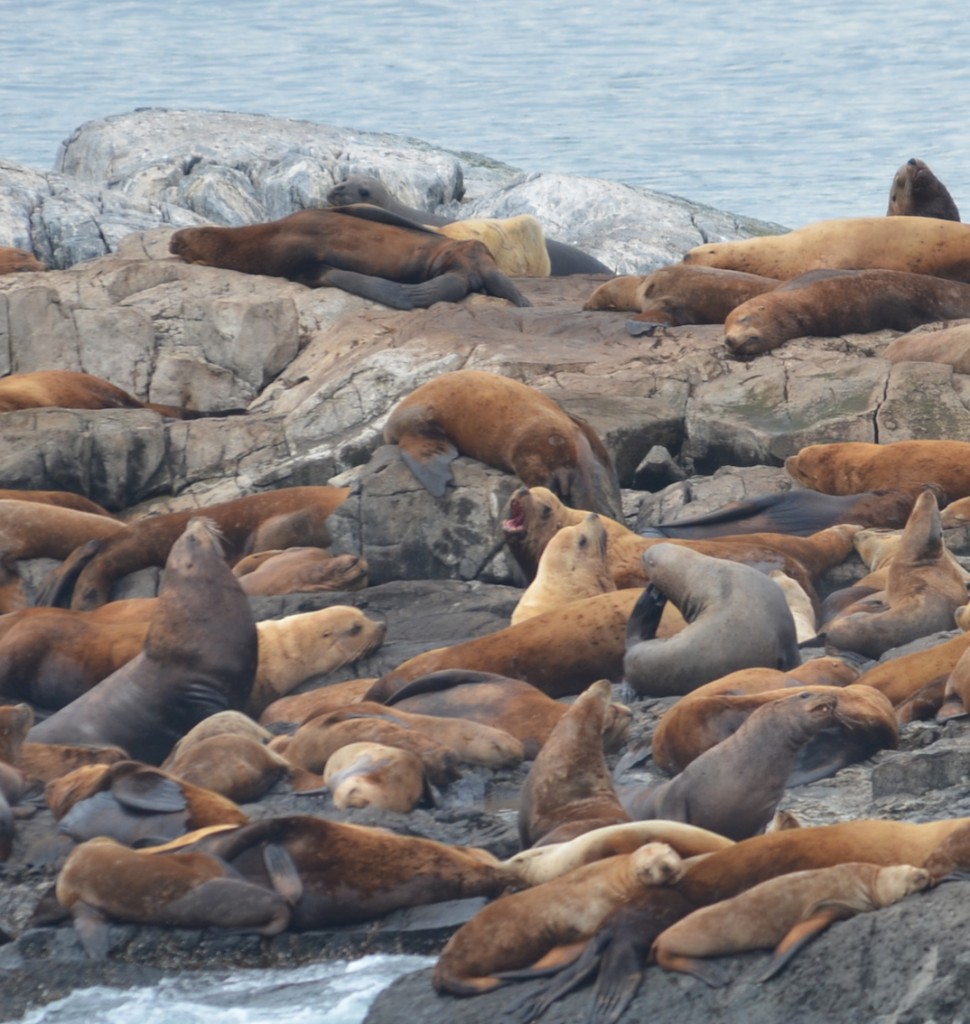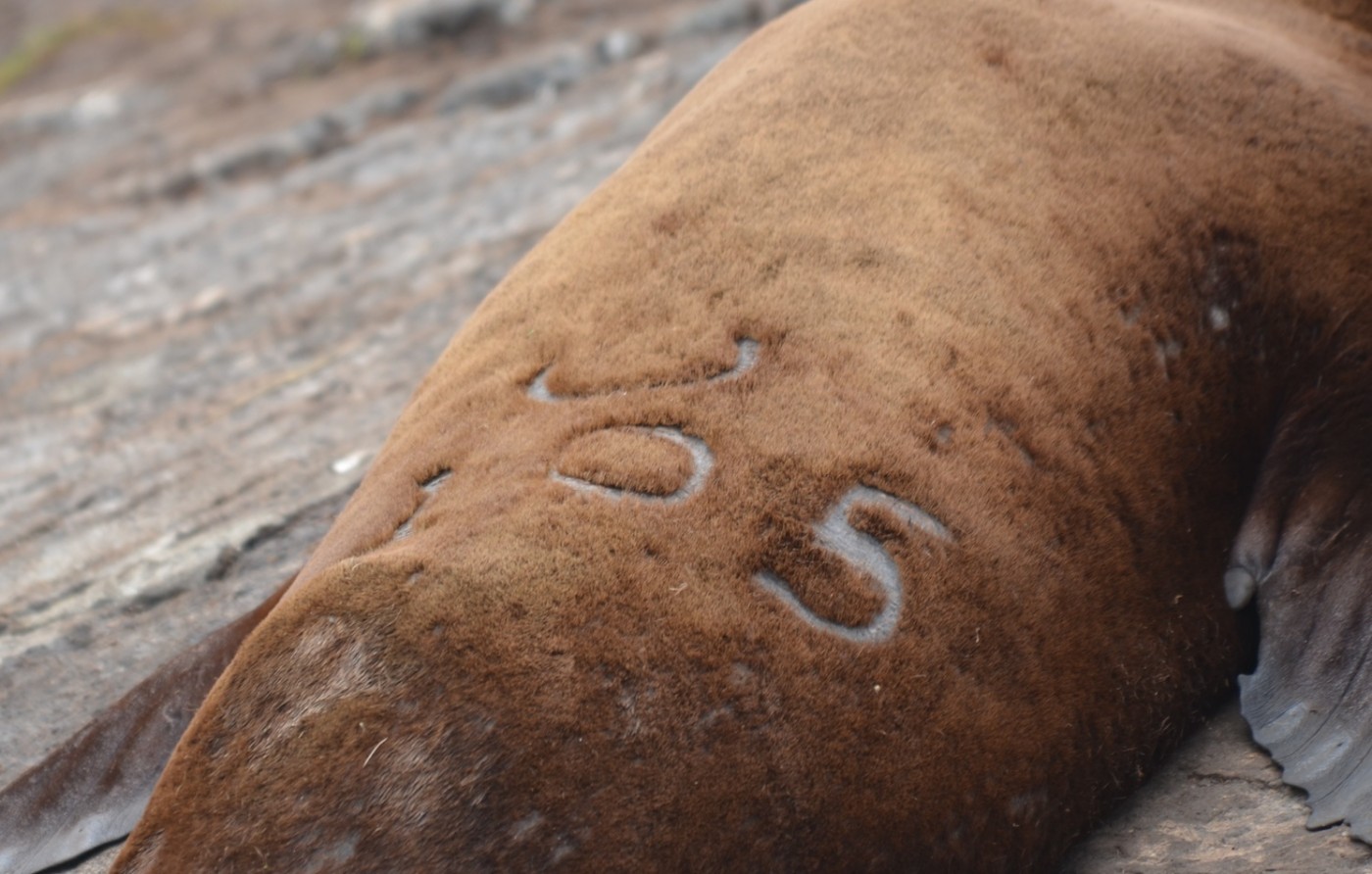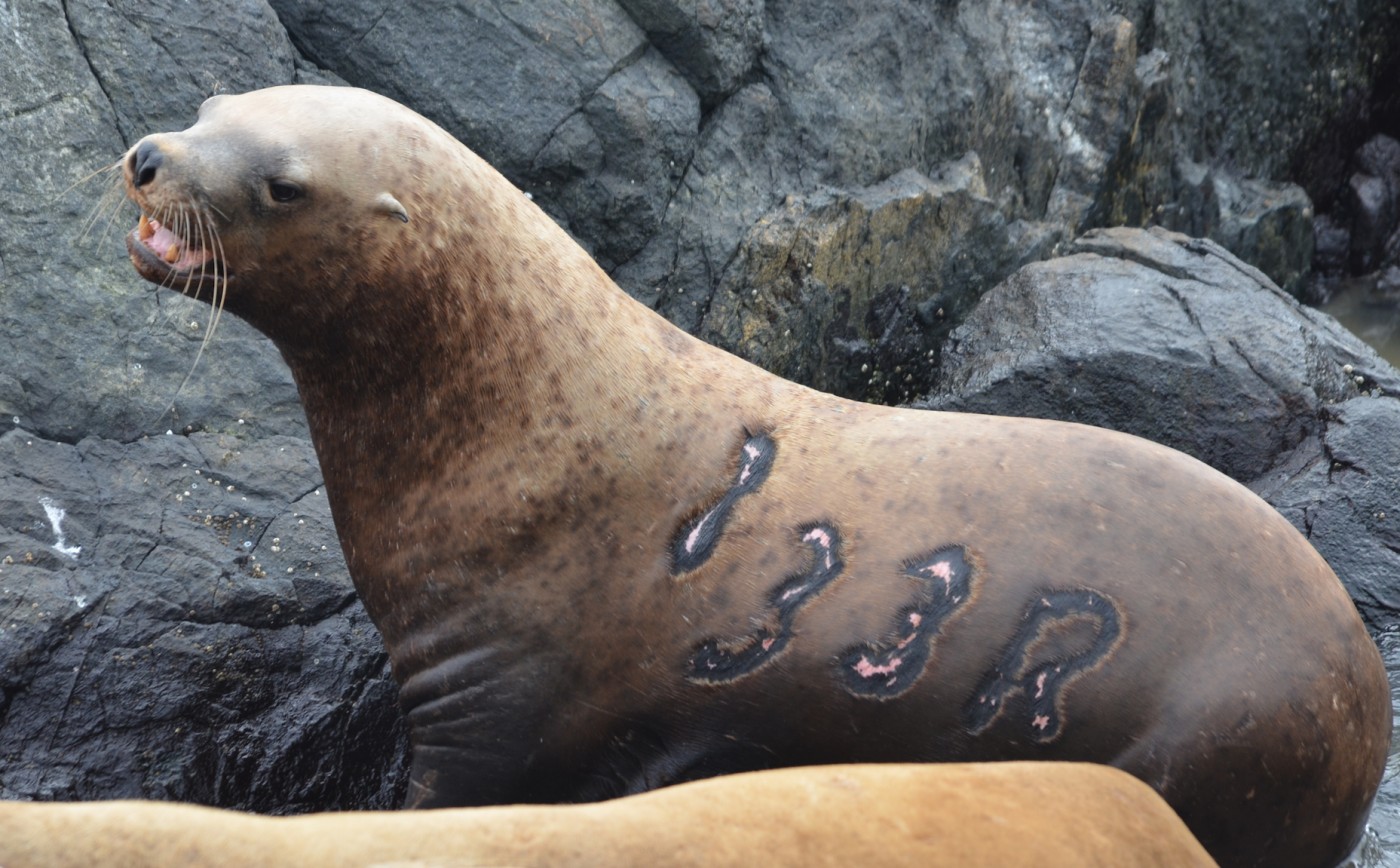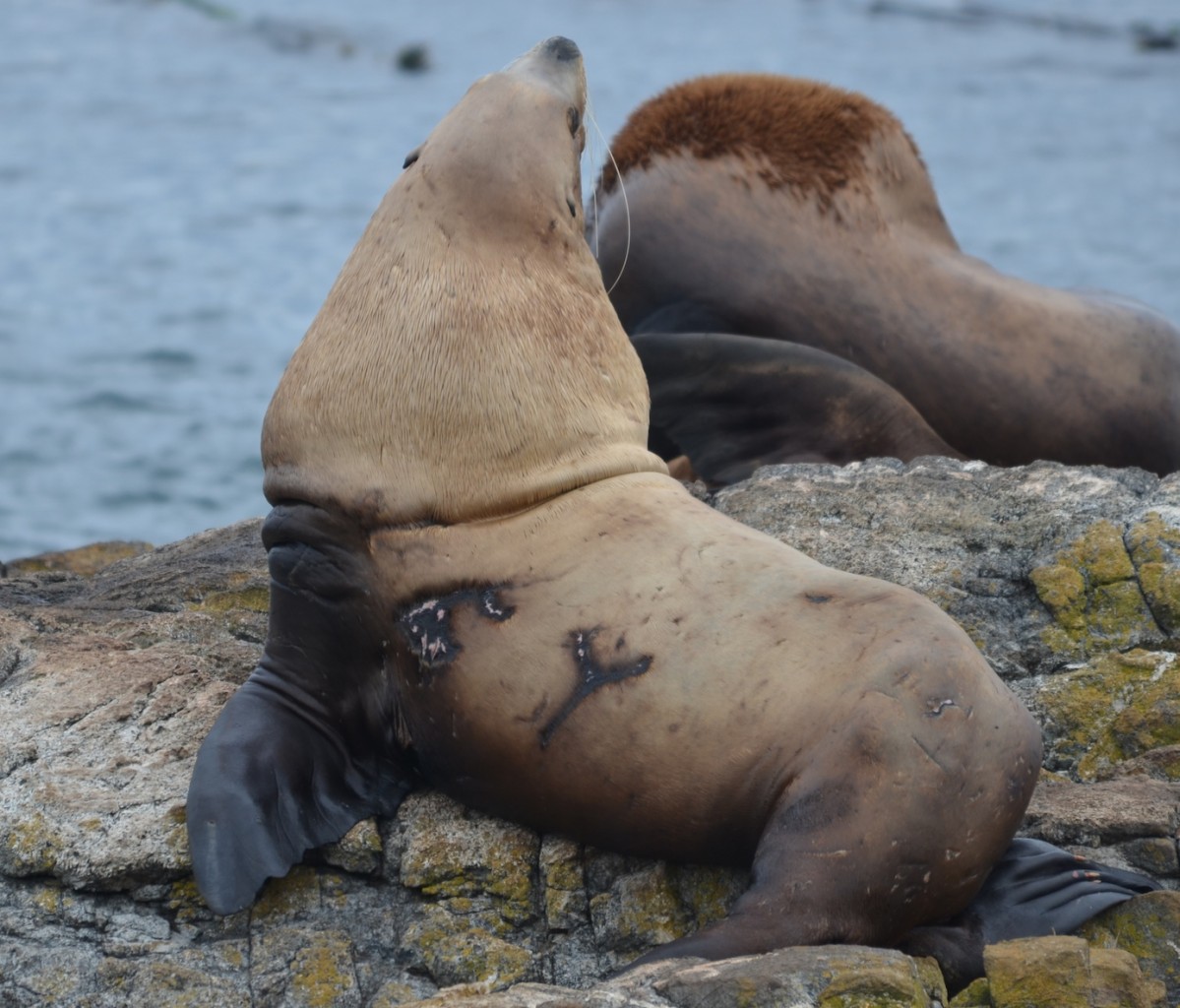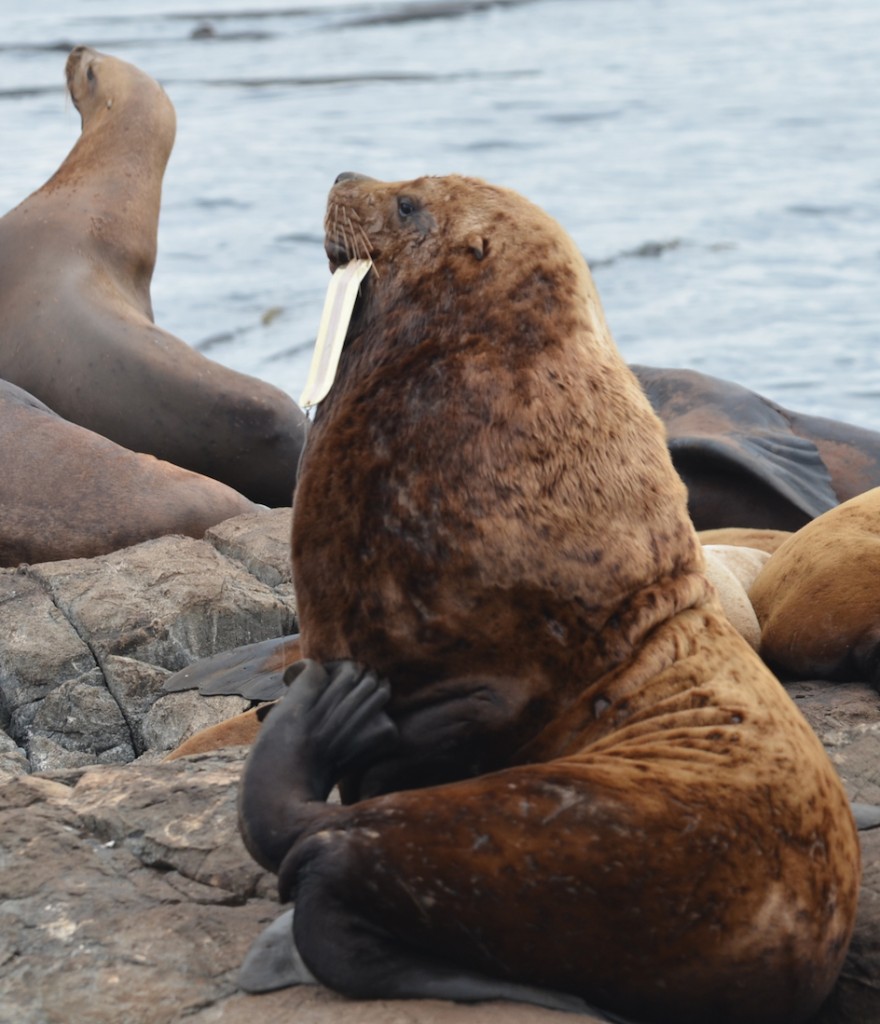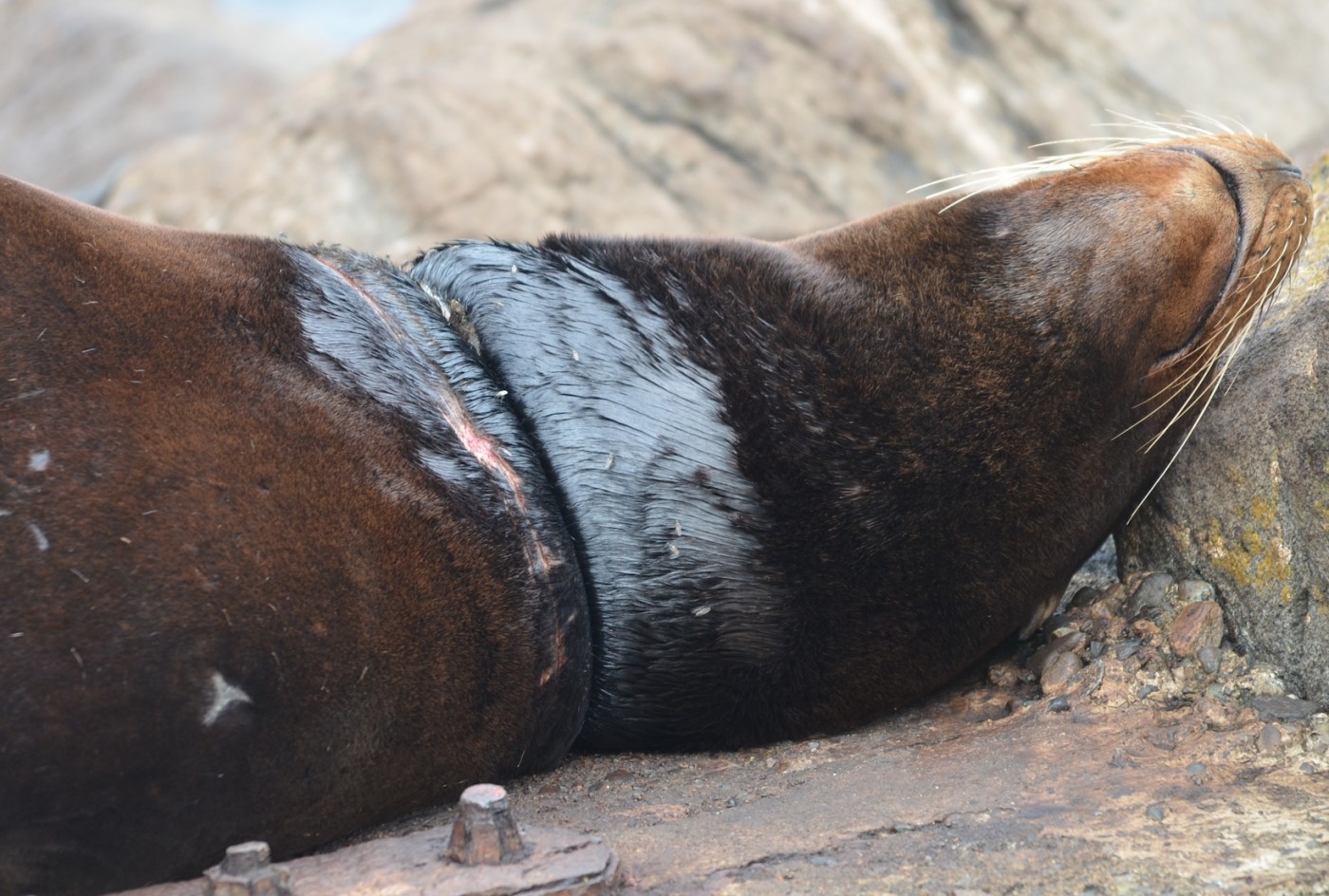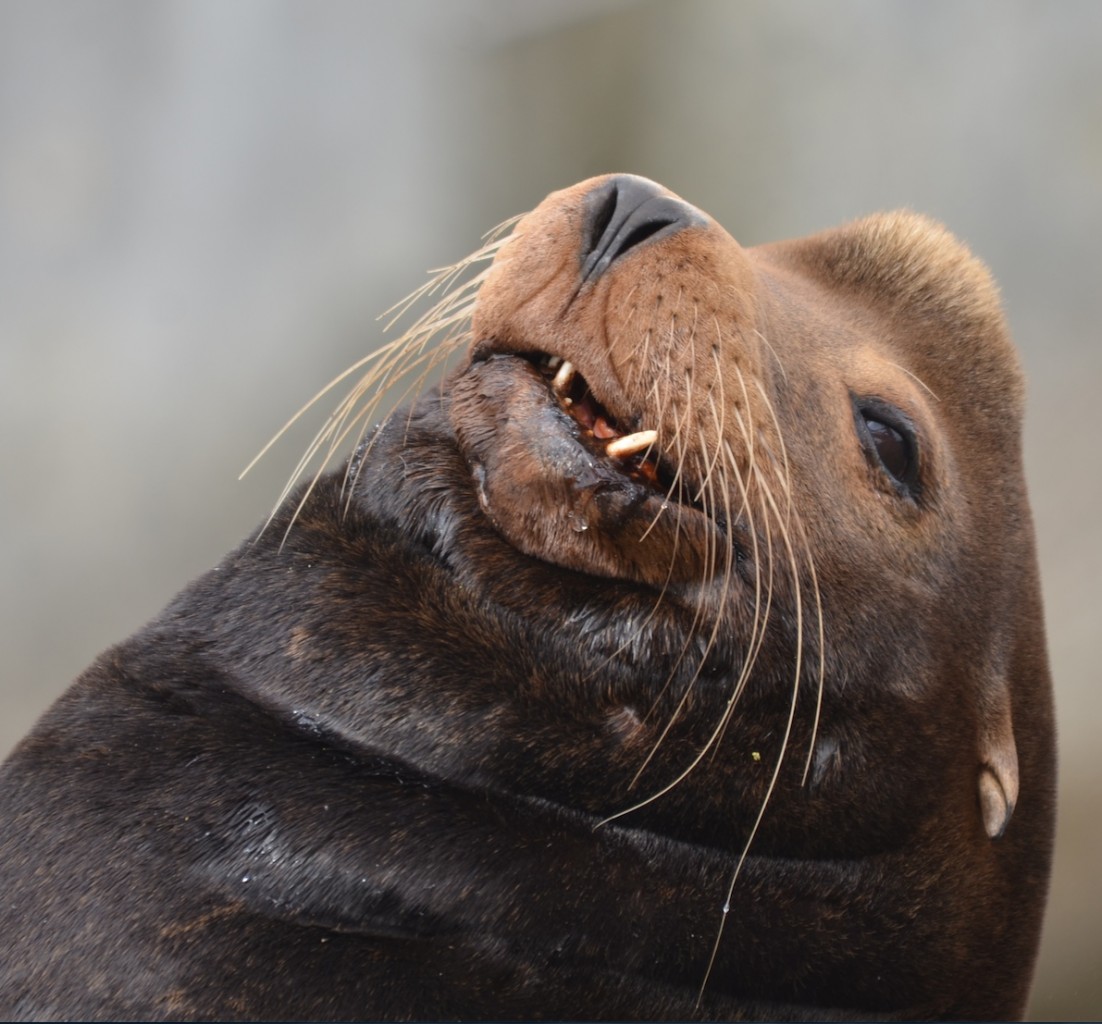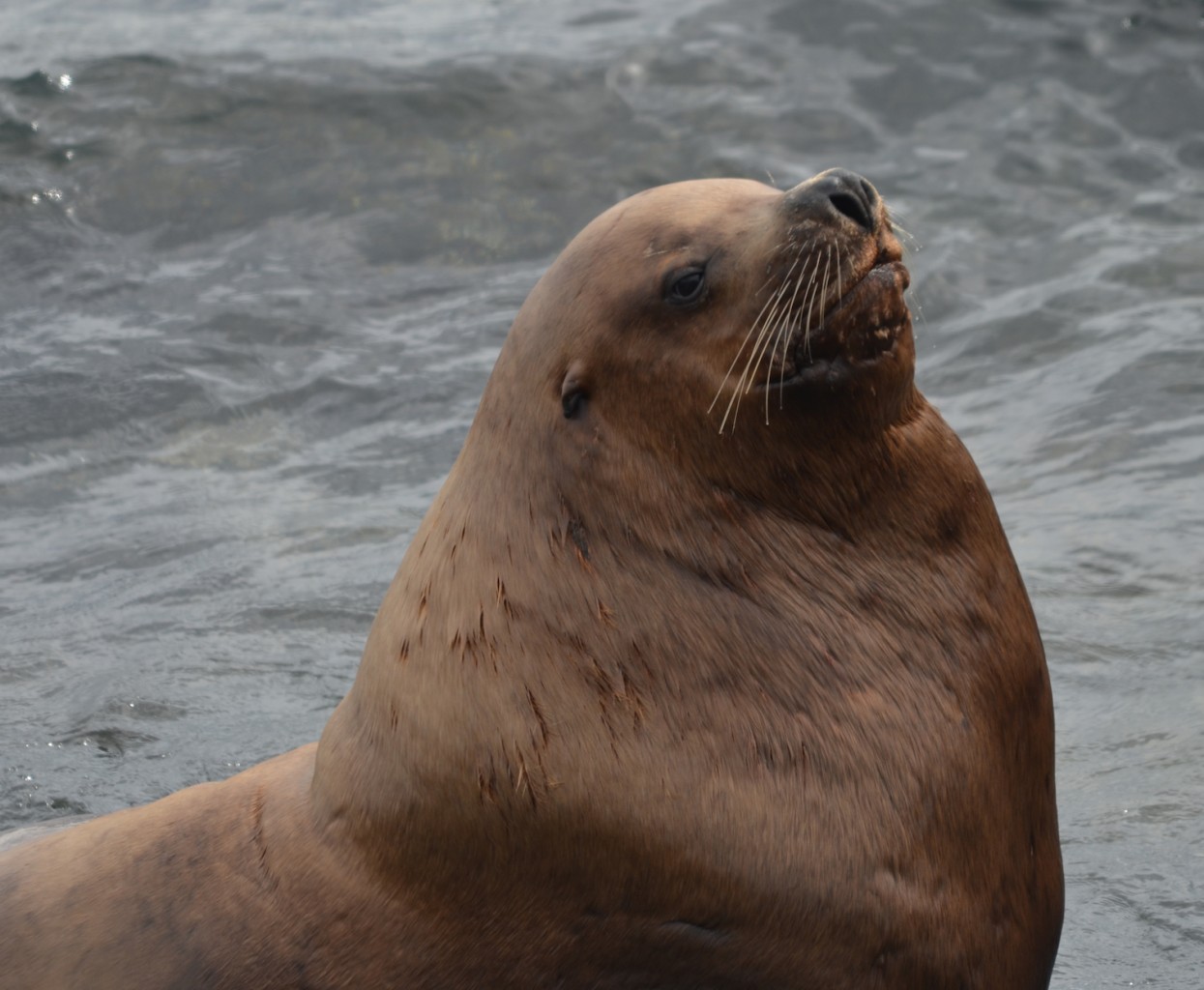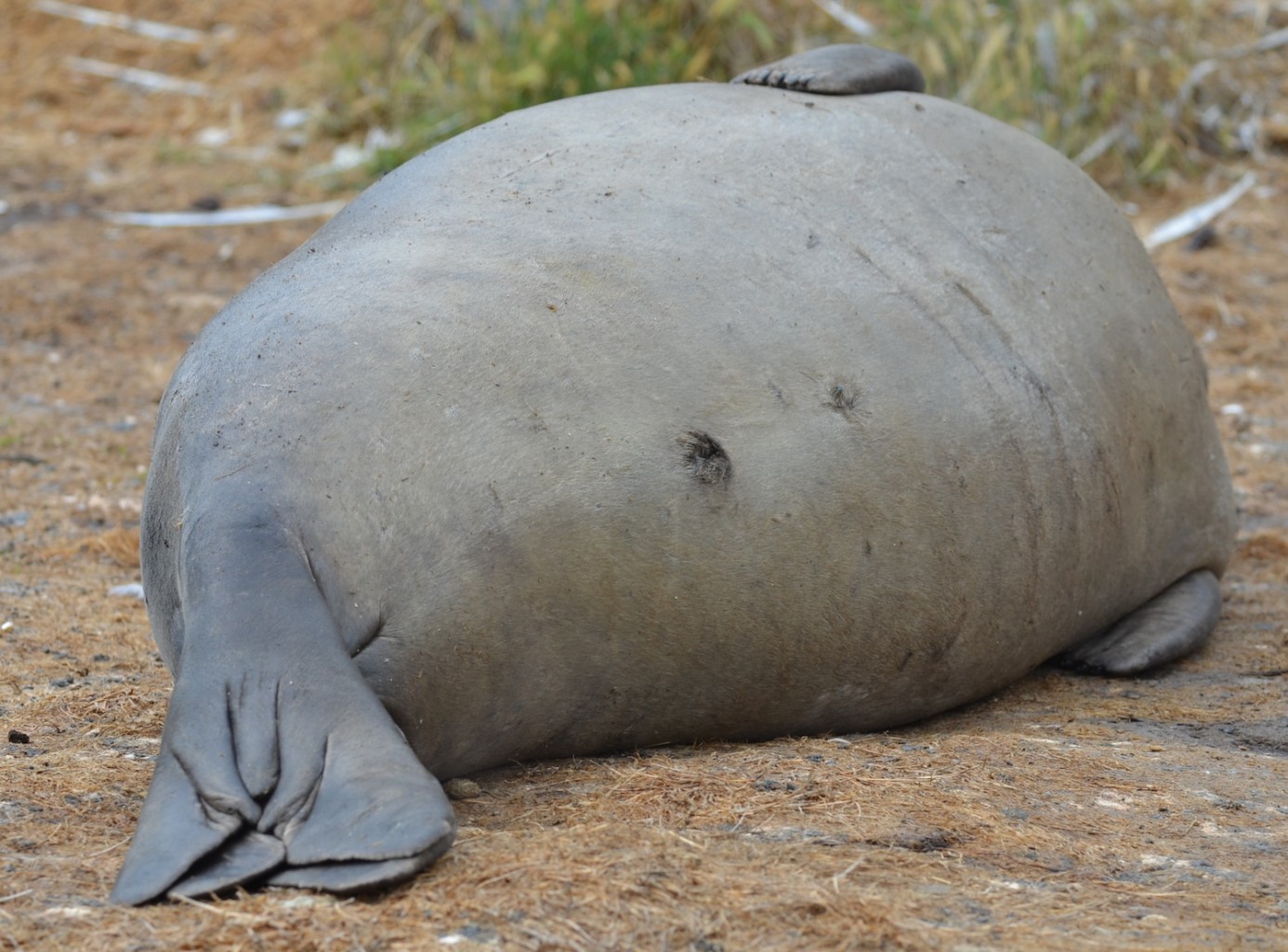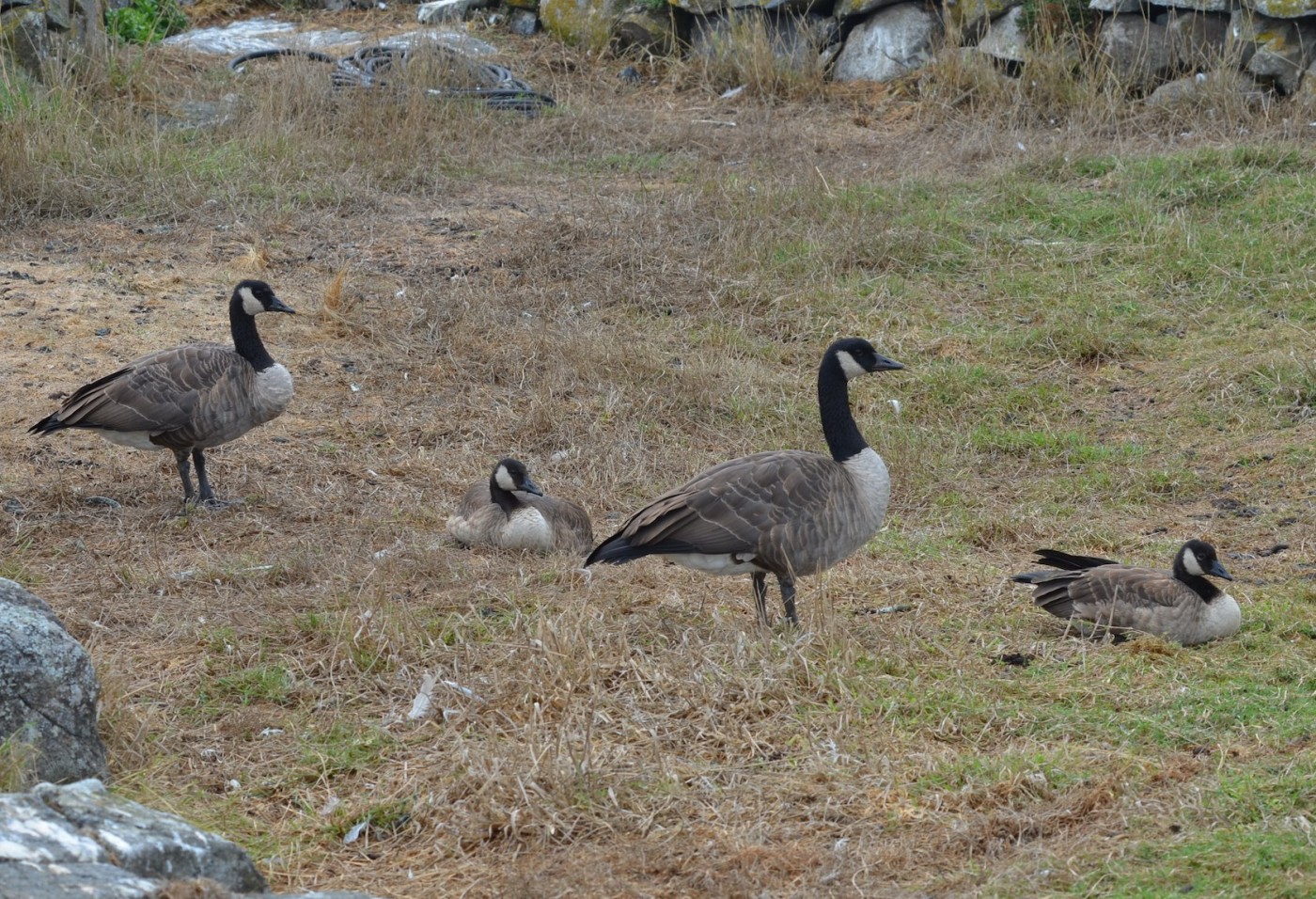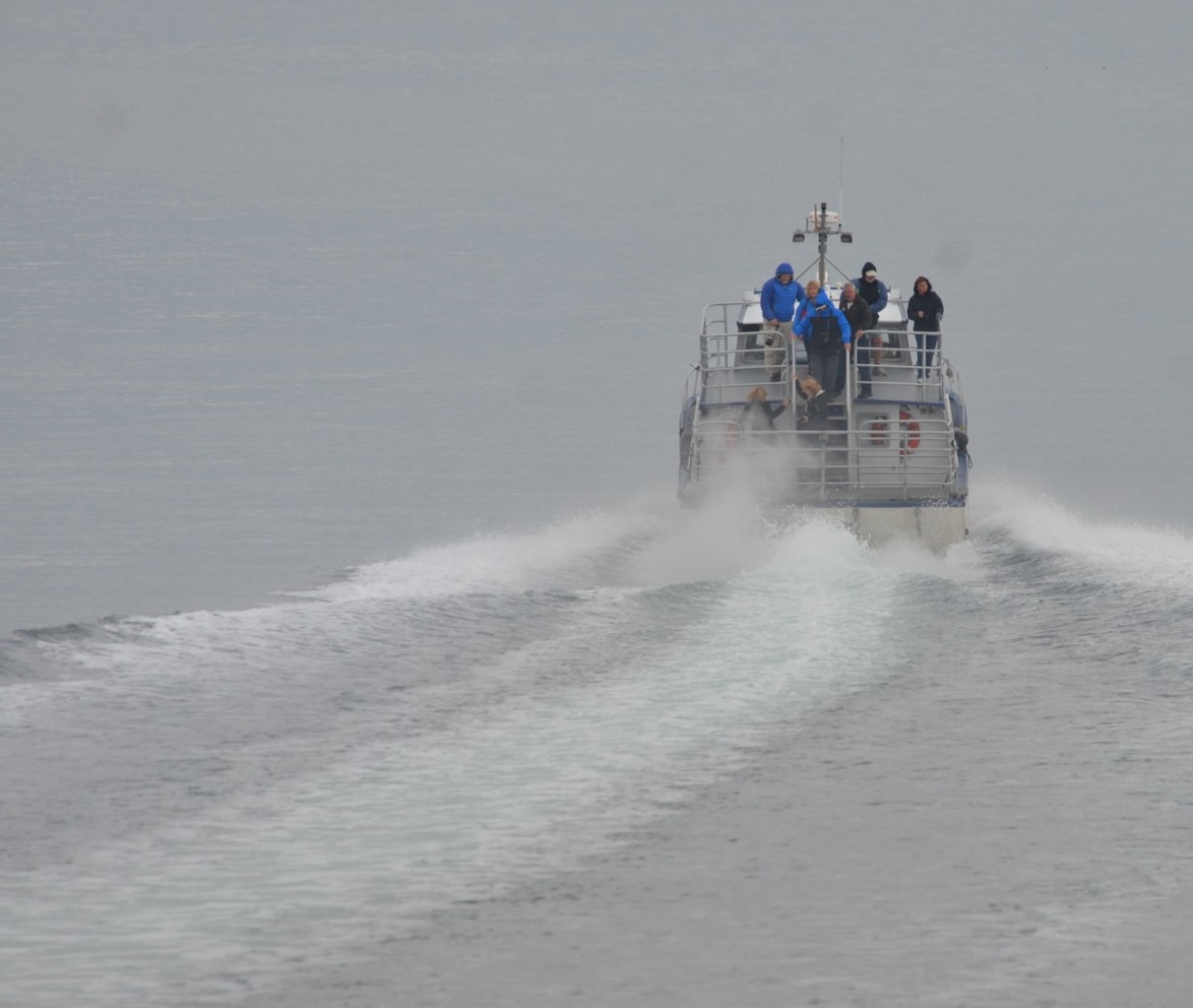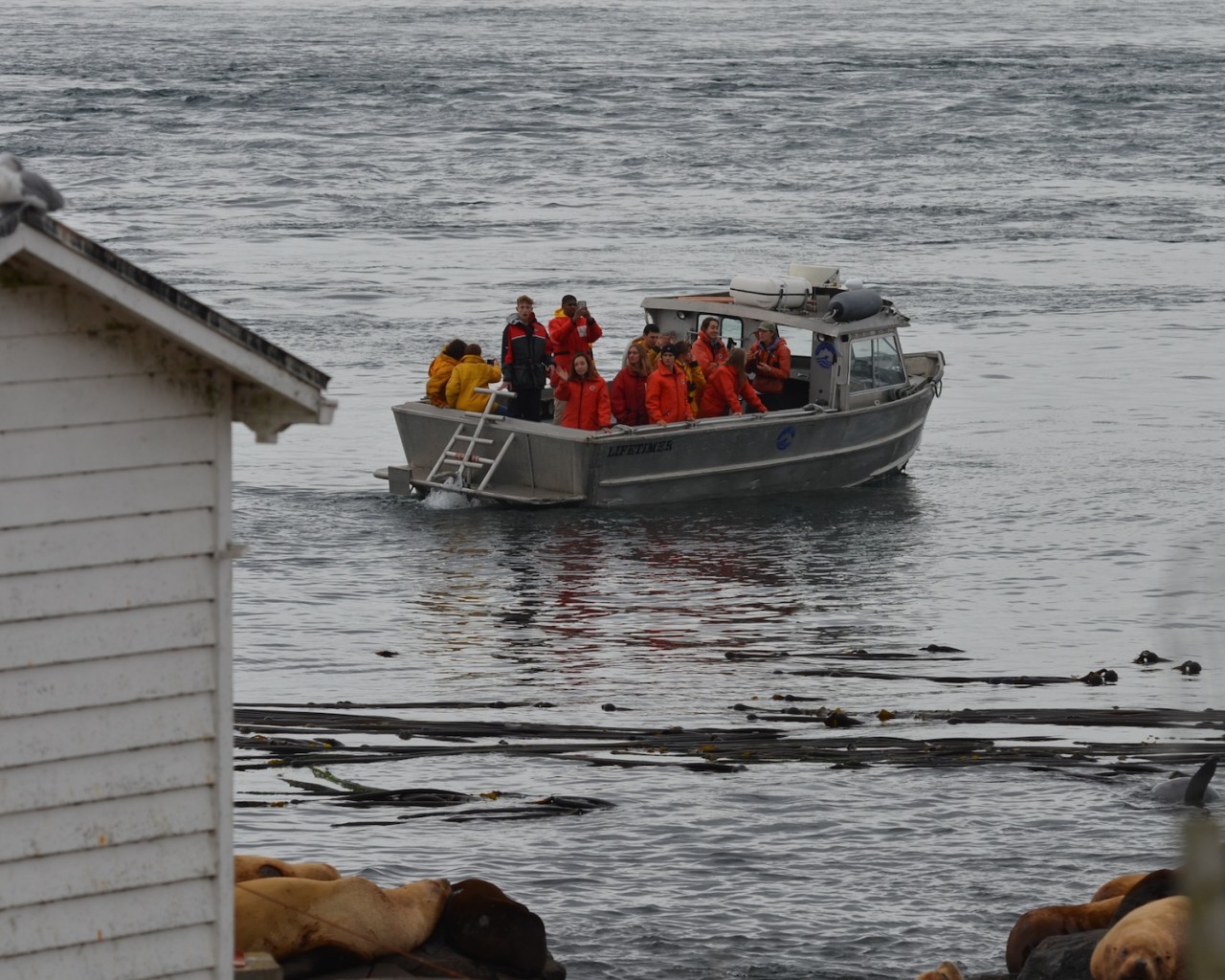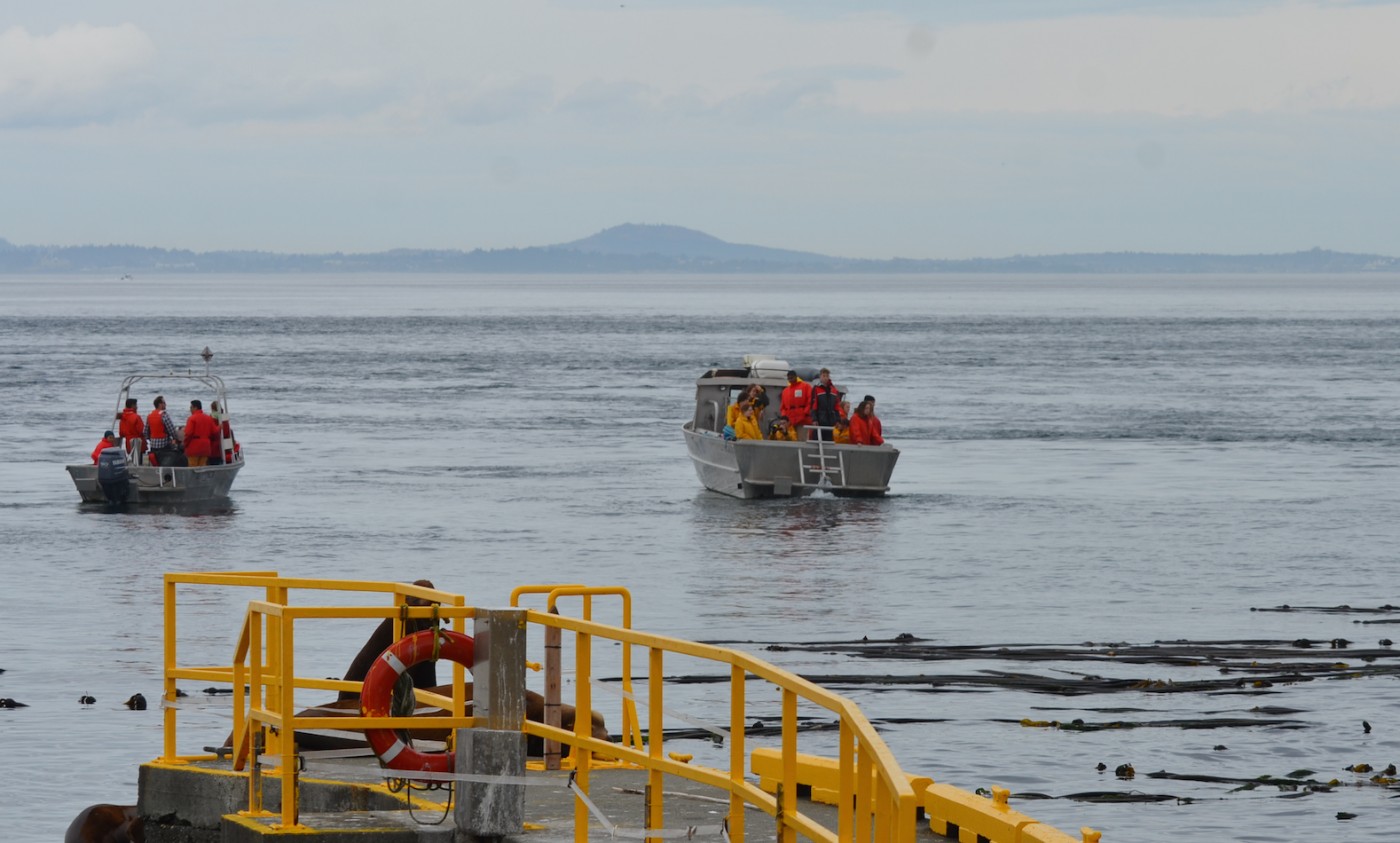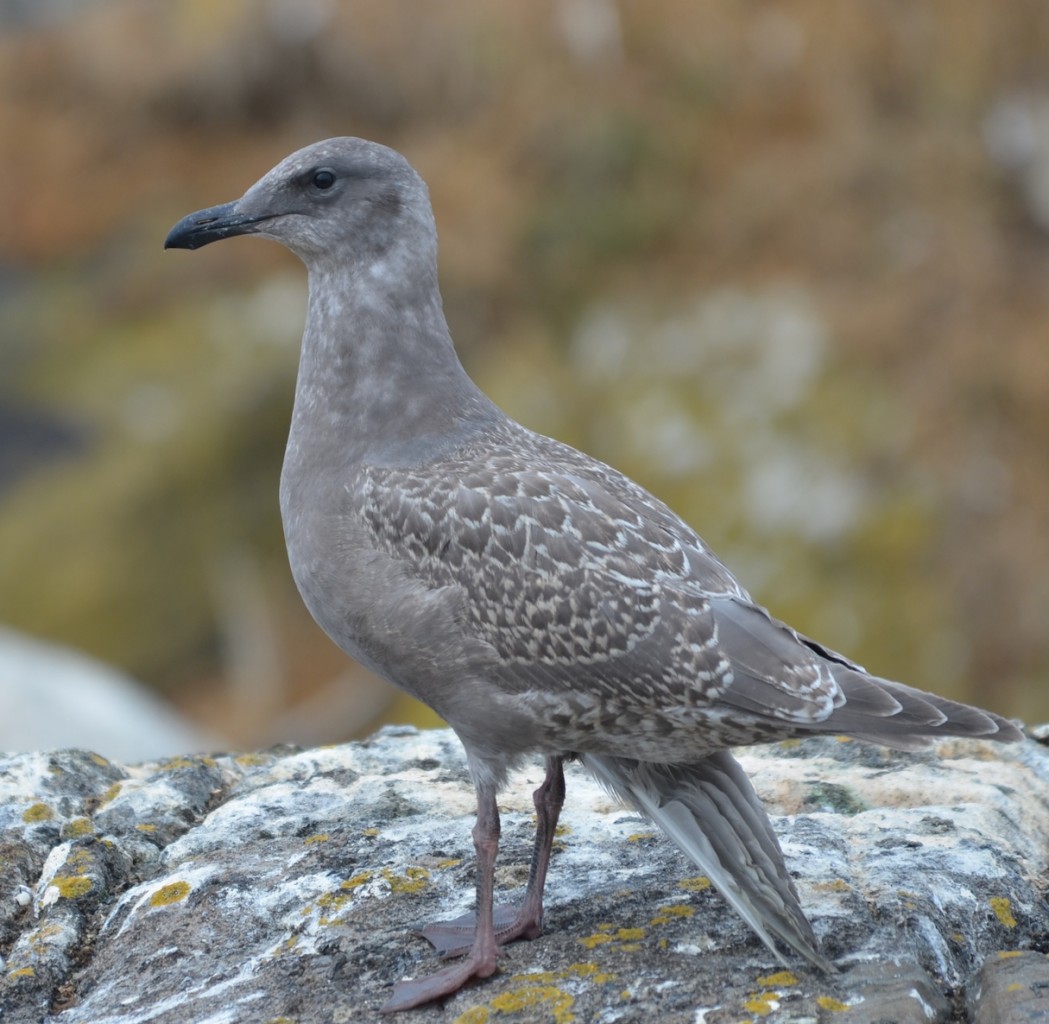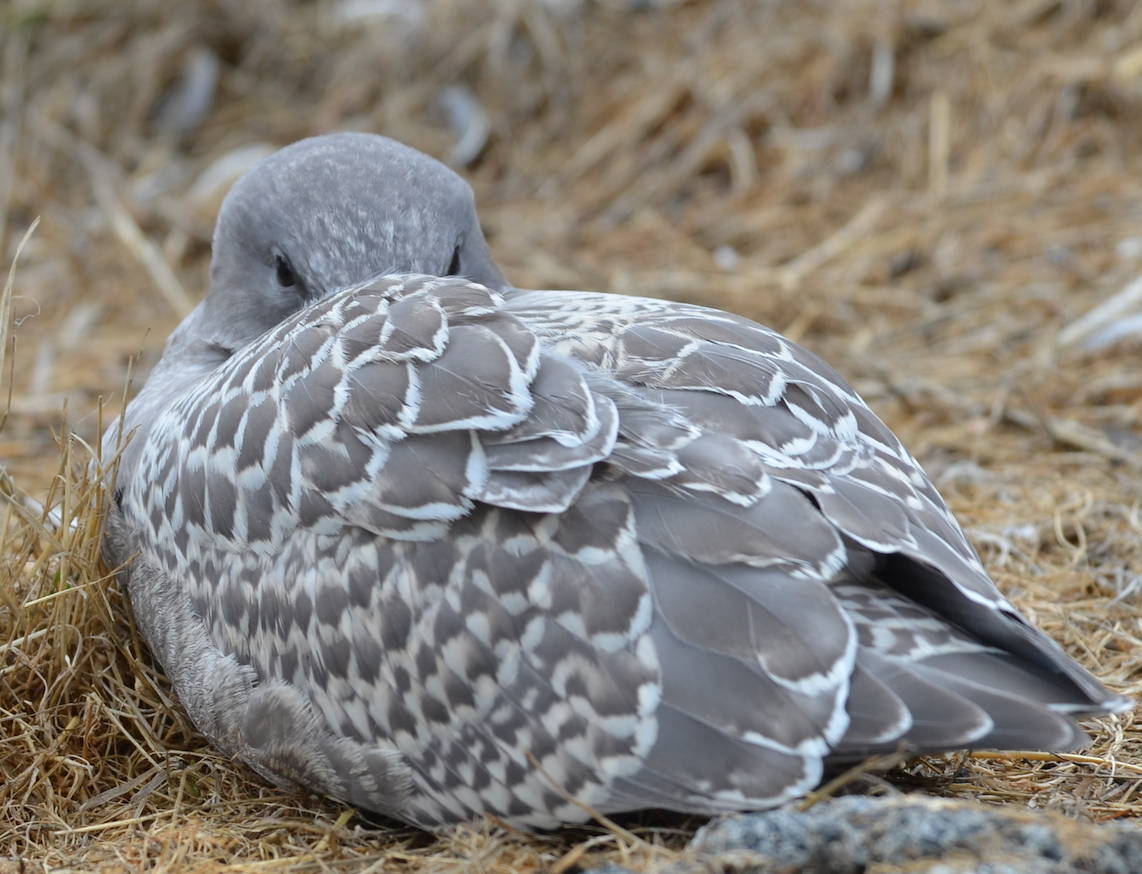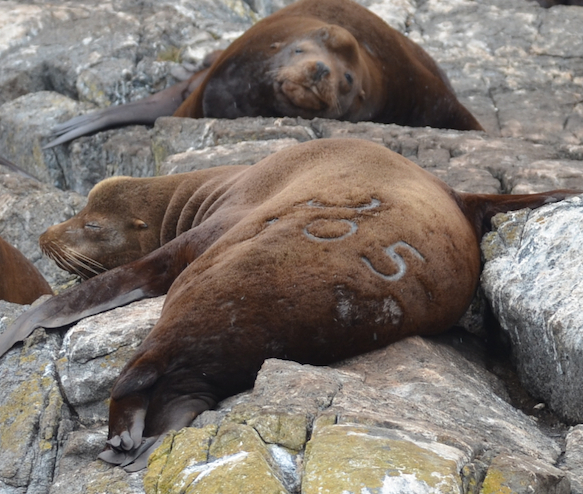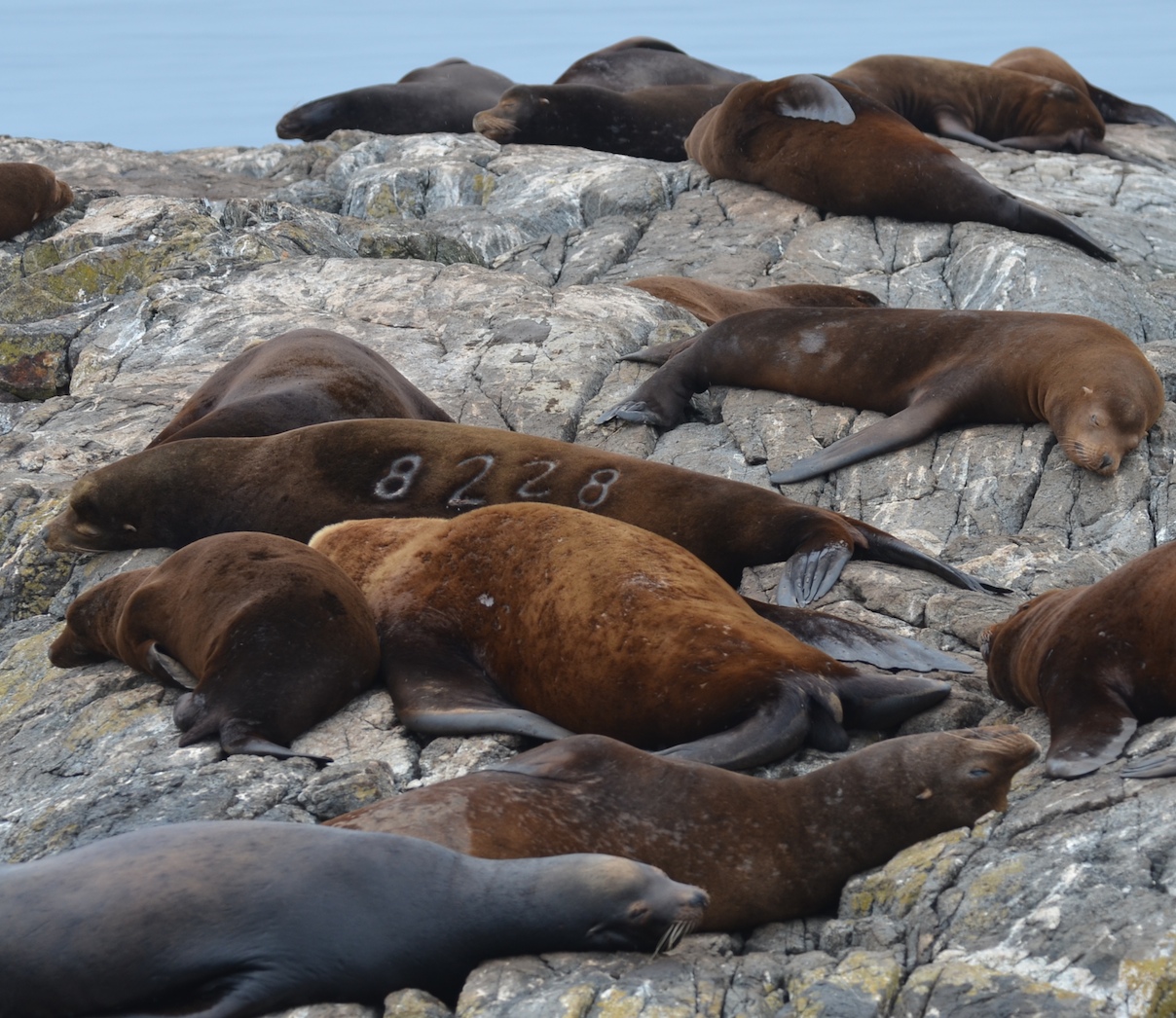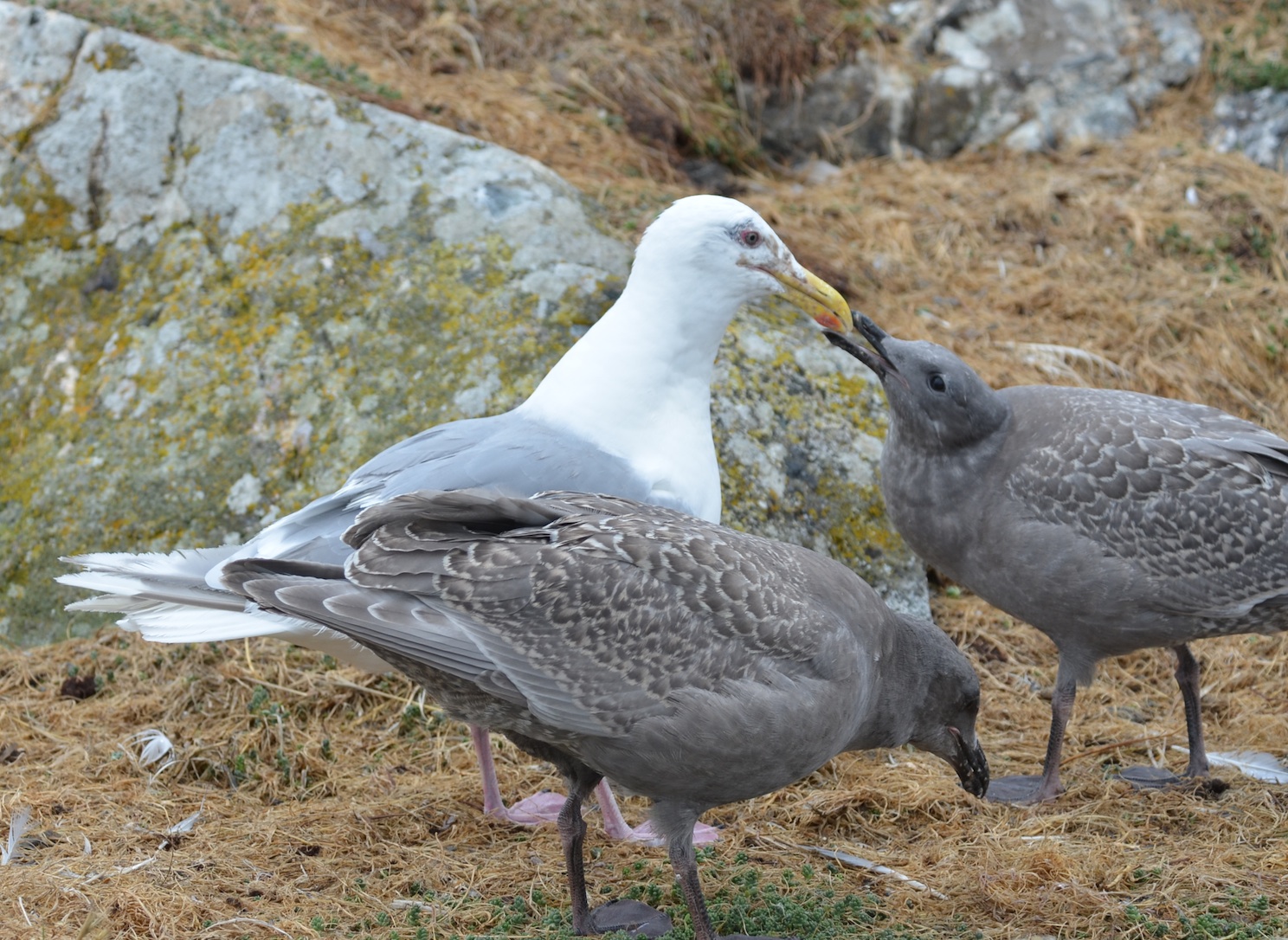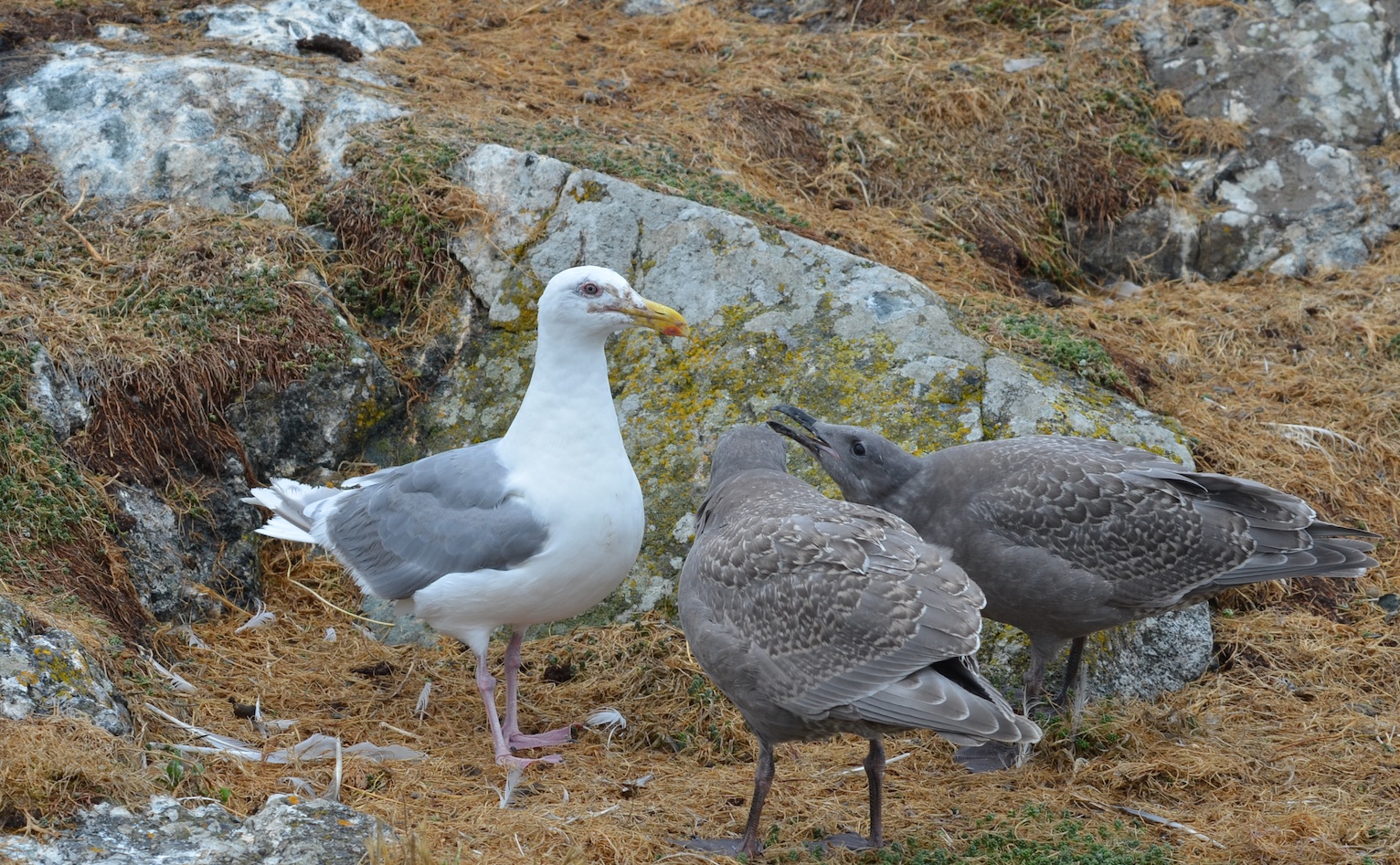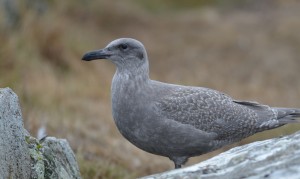There was very little wind all day and the sun came and went as clouds formed over central Juan de Fuca Strait and environs. The forecast calls for light winds to increase to westerly 15 – 20 knots this evening and then drop to 5- 15 knot easterlies Tuesday morning. The chance of showers has been pushed back to Tuesday afternoon and evening and rain is forecast for the rest of the week. The dropping barometer continued its descent and reached 1005 hPA this evening.
Today, there was only one whale-watching vessel visit, observed in the Ecological Reserve. They went really slowly in the protected area, stayed in the middle of Middle Channel and operated their vessel in a sustainable fashion. Definite candidates for the Kudos award that I give out weekly in the form of a thank-you e-mail to the company that does the best job of operating sustainably in reserve. Best practices align with the agreement made with the industry and the Marine Mammal Regulations. One sports fishing vessel was also noted. They were fishing either right on the boundary or just inside the reserve. As soon as I went out with the camera, they pulled up and left which made me wonder.
The sea lions continue to dominate the scene and the sound here. Their moult is progressing and there was hair everywhere after yesterday’s strong westerly winds. They seem to be spending more time ashore and it appears that there are more animals on Great Race everyday. This may be because less of Middle Rocks is available due to increased swell height and tide level. Photography of tags, brands and wounds continues and the data is being logged for use by NOAA scientists in determining population levels and trends, as well as migration patterns. The Vancouver Aquarium is interested in doing some animal welfare work here later in the season with “necklaced” individuals like the ones shown in yesterday’s blog, with plastic packing straps stuck on their necks and ‘growing’ into the flesh. I also take quite a few photos of sea lions that have nothing wrong with them: they are wrestling, sleeping, swimming and just hanging out. See gallery below.
More on other species tomorrow.
Chores were routine today other than creating a draft hand-out on ecologically sensitive areas for island visitors. Fence mending takes quite a bit of time each day but the sea lions are very smart so it is getting better. There was no gull guano on the solar panels this morning and I thought maybe it would soon be time to move into a every second day routine, for cleaning them. The dust and hair deposited on the solar panels turned the wash water into a deep brown in no time, so the daily wash will continue for now. Solar energy is particularly appreciated right now as I am still recovering from an almost complete loss of fresh water due to a mystery plumbing failure downstream of the Science House shut-off valve. This means running the de-salinator to make fresh water whenever there is sufficient solar power in order to not run down the batteries or use the generator. It is a bit of a juggling act but a small bother in a wonderful place with an incredible window on the world of nature.


